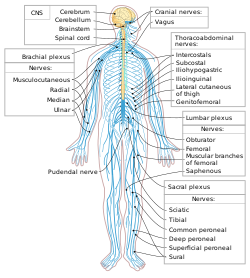Morton’s neuroma, also known as nerve tumor in its early stages, is a rare form of skin cancer that often causes numbness and pain in the legs and feet.

If left untreated, it can eventually cause permanent damage to the nerves in the affected area and even amputation of the affected limb. This type of skin cancer is extremely contagious and can spread easily from one person to another.
The primary symptoms of Morton’s nephroma are: a sharp, stabbing or burning sensation. A slight burning sensation is associated with some kinds of this kind of cancer. Some people might also have slight tingling or numbing sensations in their feet. The symptoms might be more acute when you wear high or tight-heeled footwear or move your feet. People who are diabetic or those who take sedatives, analgesics or anti-inflammatory medicines can also develop this form of skin cancer.
Diagnosis of this kind of skin cancer usually depends on the patient’s environment and family history. A doctor will usually do a physical exam and ask about previous illnesses. The doctor will also take into account the patient’s medical history. Blood tests, MRI scans and X-rays are usually conducted to diagnose this type of cancer.

Other imaging techniques, such as CT scan and MRI scan, can also determine the extent of the tumor.
During surgery, the tumor will be removed through an incision in the skin or through a bone marrow biopsy. In bone marrow biopsy, a sample of bone marrow from the patient’s bone marrow or the lymph nodes is taken and the cancer cells are extracted and frozen for future studies.
The bone marrow biopsy can also help to detect if the cancer is in fact in the bone marrow. Usually, bone marrow is removed after the biopsy procedure. However, the doctors may wait until later in order to remove the bone marrow if it is still viable. Sometimes, doctors use radioactive substances in order to destroy the cancer cells and remove them from the bone marrow.
Sometimes, a bone marrow biopsy is not enough to determine if the patient has the condition. Bone marrow can sometimes grow back after the tumor has been removed. It is then necessary to carry out further diagnosis tests. In order to determine the presence of the tumor, doctors will take blood samples and send the sample to a pathology lab for testing. Blood tests will help the doctors to determine the presence of the tumor in the bone marrow.
Nerve conduction tests (NCD) will help the doctor to diagnose the condition.

These tests include nerve conduction blockages, nerve root blockages, and axillary herniation.
If the cancer is in the nervous system, doctors may do nerve conduction testing. Nerve conduction testing uses electrodes attached to a probe inserted in the foot and ankle to transmit electricity to the brain to determine if nerve impulses are being sent and received in the brain. Neuropathy is often the first symptom of nerve tumor in the nerve roots.
On the other hand, the second type of tests is called axillary herniation. A catheter is inserted into the arm and attached to the wrist. The catheter is connected to a generator that produces high frequency sound waves. In the catheter, the electrical impulses are sent into the arm.
One type of axillary herniation test is the axillary dye test, which is a non-invasive test that looks at the color of the surrounding tissues. This can help doctors identify the kind of tissue that has been affected by the tumor. If the tumor has spread to the nervous system, the doctor may look for changes in the white matter, cerebrospinal fluid and myelin.
There is another type of axillary dye test called the cellular level analysis. This test also looks at the blood cells, but this test is usually performed only after radiotherapy.
Another type of test is the spinal tapeworm analysis test. With spinal tapeworm analysis test, the doctor will inject the tapeworm larvae into the spinal cord and the parasites will grow for a week and then the doctor will use this method to see if the parasite has grown inside the spinal cord.